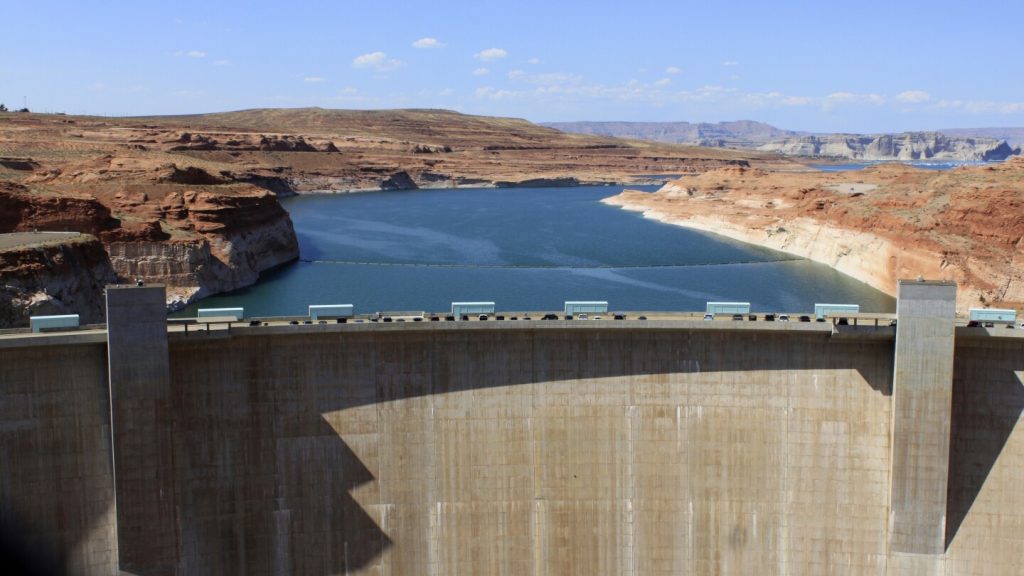Plumbing issues at the Glen Canyon Dam on the Utah-Arizona border are causing concerns about future water delivery to Southwestern states supplied by the Colorado River. The dam’s four tubes known as “river outlet works” have suffered damage, including sedimentation and cavitation, which can lead to mechanical damage. The U.S. Bureau of Reclamation is evaluating the issues as Lake Powell reaches low levels.
The Colorado River provides water to seven U.S. states, nearly 30 Native American tribes, and two Mexican states. Overuse and drought, exacerbated by climate change, have reduced the river’s flow significantly. Lake Mead and Lake Powell, used for water storage and power generation, reflect the health of the Colorado River. Recent years have seen historic lows, followed by some recovery due to above-average winter precipitation and conservation efforts.
The structural problems at Glen Canyon Dam could complicate how federal officials manage the river in the future, especially as Lake Powell is predicted to fall below current levels. The damaged tubes, located below larger penstocks, allow water releases at lower reservoir levels. Currently, Lake Powell is at about 32% capacity, and officials are working to address the issues and potential solutions to avoid water cuts to states in the Lower Basin.
States and tribes that rely on the Colorado River are working on a long-term deal to share the dwindling resource as current rules expire in 2026. Environmental groups have warned about the possibility of water levels at Lake Powell reaching a point where the dam can no longer function for hydropower or release downstream water. This poses a significant risk to the water supply for 25 million people and major agricultural producers in the region.
Officials from Central Arizona Project, Colorado River Board of California, and Arizona Department of Water Resources are collaborating with the Bureau of Reclamation to investigate and potentially repair the damaged tubes at Glen Canyon Dam. If repairs are not possible, there may be a need for engineering solutions to prevent further water cuts to the Lower Basin states. The Upper Basin states are also involved in discussions to address the long-term sustainability of the Colorado River.
As federal agencies and stakeholders work to address the plumbing problems at Glen Canyon Dam, the future of water delivery to Southwestern states remains uncertain. The Colorado River’s decreasing flow, compounded by overuse and drought, highlights the urgent need for sustainable water management practices and collaborative efforts to ensure a stable water supply for all stakeholders in the region. Environmental advocacy groups are monitoring the situation closely, emphasizing the importance of protecting the Colorado River as a vital resource for millions of people and agricultural producers.


